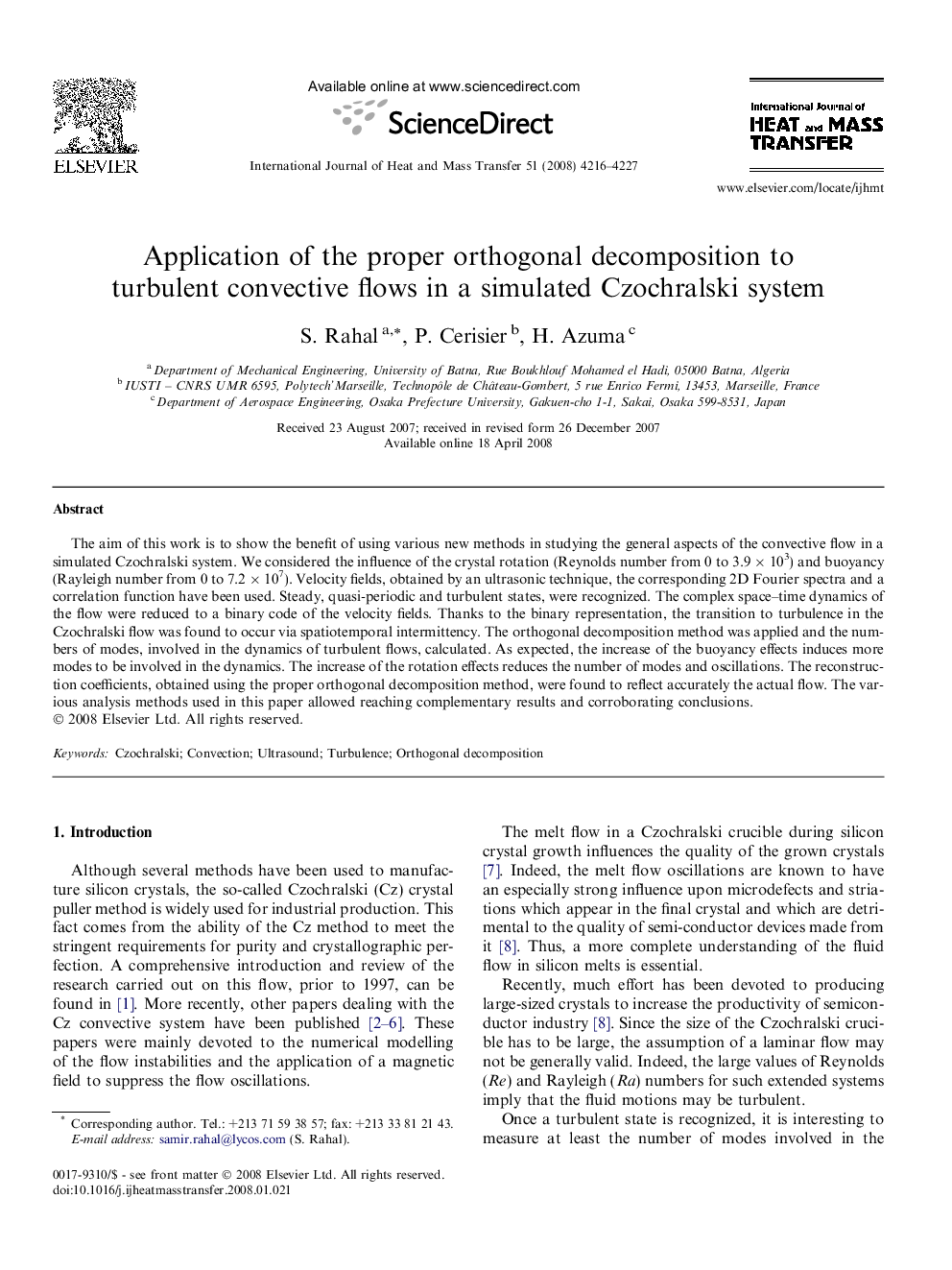| Article ID | Journal | Published Year | Pages | File Type |
|---|---|---|---|---|
| 660255 | International Journal of Heat and Mass Transfer | 2008 | 12 Pages |
Abstract
The aim of this work is to show the benefit of using various new methods in studying the general aspects of the convective flow in a simulated Czochralski system. We considered the influence of the crystal rotation (Reynolds number from 0 to 3.9Â ÃÂ 103) and buoyancy (Rayleigh number from 0 to 7.2Â ÃÂ 107). Velocity fields, obtained by an ultrasonic technique, the corresponding 2D Fourier spectra and a correlation function have been used. Steady, quasi-periodic and turbulent states, were recognized. The complex space-time dynamics of the flow were reduced to a binary code of the velocity fields. Thanks to the binary representation, the transition to turbulence in the Czochralski flow was found to occur via spatiotemporal intermittency. The orthogonal decomposition method was applied and the numbers of modes, involved in the dynamics of turbulent flows, calculated. As expected, the increase of the buoyancy effects induces more modes to be involved in the dynamics. The increase of the rotation effects reduces the number of modes and oscillations. The reconstruction coefficients, obtained using the proper orthogonal decomposition method, were found to reflect accurately the actual flow. The various analysis methods used in this paper allowed reaching complementary results and corroborating conclusions.
Related Topics
Physical Sciences and Engineering
Chemical Engineering
Fluid Flow and Transfer Processes
Authors
S. Rahal, P. Cerisier, H. Azuma,
